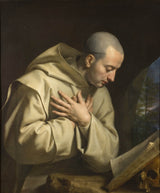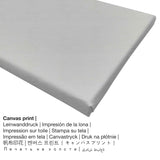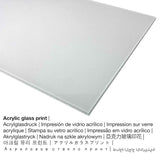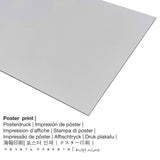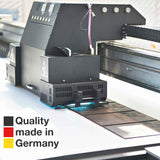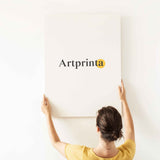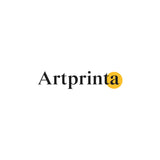Philippe de Champaigne, 1655 - Saint Bruno - mbipụta nka mara mma
Ụtụ gụnyere. Mbupu gbakọrọ na ndenye ọpụpụ.
Nkọwa nke ọrụ nka ihe karịrị afọ 360
Saint Bruno mere site na Dutch artist Philippe de Champaigne in the year 1655. A na-ese nke mbụ ya na nha Ogologo: 90 cm (35,4 ″); Obosara: 78 cm (30,7 ″) Ekebere: Elu: 105 cm (41,3 ″); Obosara: 91 cm (35,8 ″); Omimi: 6 cm (2,3 ″). Oil on canvas was used by the artist as the medium of the artpiece. This artwork can be viewed in in the digital art collection of National Museum nke Stockholm. Site n'ikike nke: Nationalmuseum Stockholm na Wikimedia Commons (license - public domain).: . What is more, the alignment of the digital reproduction is Eserese with a side ratio of 1 : 1.2, which implies that the length is 20% shorter than the width. Philippe de Champaigne was a male painter of Dutch nationality, whose artistic style was primarily Baroque. The Baroque painter lived for a total of 72 years - born in the year 1602 and deceased in the year 1674 in Paris.
Họrọ ihe ị ga-atụkwasị n'ụlọ gị
The product dropdown menu gives you the opportunity to choose the size and materialaccording to your personal preferences. You can choose your your favorite size and material among the following options:
- Mbipụta kwaaji: The printed canvas mounted on a wood frame. Your printed canvas of your favorite artpiece will allow you to transform your personal into a large artwork like you would see in a gallery. Canvas prints are relatively low in weight, which implies that it is easy and straightforward to hang the Canvas print without any wall-mounts. Canvas prints are suitable for all types of walls.
- Mbipụta iko acrylic (nke nwere ezigbo mkpuchi iko n'elu): An print on acrylic glass, often denoted as a print on plexiglass, transforms the artwork into décor. With an acrylic glass art print contrasts and also minor image details will be more recognizeable with the help of the very subtle tonal gradation of the print.
- Aluminom dibond mbipụta (ọla): These are metal prints on aluminium dibond with an outstanding depth. The white and bright sections of the artwork shimmer with a silky gloss but without glow. Colors are vivid and luminous, the details are very clear.
- Mpempe akwụkwọ (ihe kwaaji): The Artprinta poster print is a UV printed sheet of flat cotton canvas with a slightly roughened structure on the surface. Please bear in mind, that depending on the absolute size of the poster print we add a white margin 2-6cm around the work of art in order to facilitate the framing with a custom frame.
Nkwupụta iwu: We try our best in order to depict the art products as precisely as possible and to display them visually. Nevertheless, the pigments of the print materials and the print result can differ slightly from the representation on your device's monitor. Depending on your settings of your screen and the nature of the surface, color pigments can unfortunately not be printed as realistically as the digital version depicted here. Since all our fine art prints are printed and processed by hand, there may as well be slight differences in the exact position and the size of the motif.
Banyere ihe
| Nkewa ngwaahịa: | nka nka |
| Usoro mmeputakwa: | dijitalụ mmeputakwa |
| Usoro nhazi: | mbipụta dijitalụ (Mbipụta UV ozugbo) |
| Ihe ngosi: | arụpụtara na Germany |
| Ụdị ngwaahịa: | a na-achọ |
| Eji ngwaahịa emebere: | Ụlọ ihe osise nka, foto mgbidi |
| Ndepụta: | usoro eserese |
| Ụdị anya: | ogologo: obosara - 1: 1.2 |
| Akụkụ akụkụ pụtara: | ogologo bụ 20% mkpụmkpụ karịa obosara |
| Nhọrọ dị: | ígwè obibi akwụkwọ (aluminium dibond), ebipụta canvas, mbipụta akwụkwọ mmado (akwụkwọ kwaaji), mbipụta iko acrylic (nwere ezigbo mkpuchi iko) |
| Ọdịiche dị n'okirikiri akwa akwa akwa (akwa akwa): | 50x60cm - 20x24", 100x120cm - 39x47", 150x180cm - 59x71" |
| Mpempe iko acrylic (nwere ezigbo mkpuchi iko) nha: | 50x60cm - 20x24", 100x120cm - 39x47" |
| Mpempe akwụkwọ mmado (akwụkwọ kwaaji) nha dị iche iche: | 50x60cm - 20x24", 100x120cm - 39x47" |
| Nhọrọ nha nha nke Dibond (ihe alumnium): | 50x60cm - 20x24", 100x120cm - 39x47" |
| Nhazi nke nnomi nka: | enweghị etiti |
Nkọwa nka ahaziri
| Aha nka: | "Saint Bruno" |
| Nhazi nka nka: | sere |
| Otu sara mbara: | nka ochie |
| Century: | 17th narị afọ |
| Emepụtara n'afọ: | 1655 |
| Ogologo afọ nka nka: | karịa afọ 360 |
| Usoro izizi: | mmanụ na kwaaji |
| Akụkụ nke ọrụ nka mbụ: | Ogologo: 90 cm (35,4 ″); Obosara: 78 cm (30,7 ″) Ekebere: Elu: 105 cm (41,3 ″); Obosara: 91 cm (35,8 ″); Omimi: 6 cm (2,3 ″) |
| Ụlọ ihe ngosi nka / ebe: | National Museum nke Stockholm |
| Ebe ngosi nka: | Stockholm, Obodo Stockholm, Sweden |
| website: | www.nationalmuseum.se |
| Ụdị ikike nka: | ngalaba ọha |
| Site n'aka: | Nationalmuseum Stockholm na Wikimedia Commons |
Nchịkọta ihe nkiri
| Aha onye nka: | Philippe de Champaign |
| okike onye nka: | nwoke |
| Obodo onye nka: | Dutch |
| Ọrụ onye na-ese ihe: | onye na-ese ihe |
| Obodo onye nka: | mba netherland |
| nhazi ọkwa: | nna ukwu ochie |
| Ụdị nke onye na-ese ihe: | Baroque |
| Nwụrụ na afọ nke: | 72 afọ |
| Afọ ọmụmụ: | 1602 |
| Afọ ọnwụ: | 1674 |
| Obodo ọnwụ: | Paris |
© Nwebiisinka nke - Artprinta (www.artprinta.com)
General information by Nationalmuseum Stockholm (© - Nationalmuseum Stockholm - National Museum nke Stockholm)
English: Saint Bruno (c. 1032-1101), the founder of the Carthusian Order, was canonized in 1623. Dressed in the typical white habit, he is portrayed in solitary prayer at his mountain retreat near Grenoble, the site of the first charterhouse. His sensitively modeled face and massive body stand out in sharp relief against the dark background, enveloped by a palpable atmosphere and natural light. The austere image mirrors Carthusian religious life with its silent contemplation and asceticism. Den helige Bruno (ca 1032-1101) grundade kartusianerorden och helgonförklarades år 1623. Han avbildas försänkt i bön, klädd i kartusianernas vita dräkt. Platsen är helgonets ensliga tillflyktsort nära Grenoble, senare det första kartusianerklostret. Omgiven av en förnimbar atmosfär står hans massiva kropp och känsligt modellerade ansikte i skarp relief mot den mörka bakgrunden. Den strama bilden speglar ett ordensliv präglat av kontemplation under tystnad och sträng askes.

